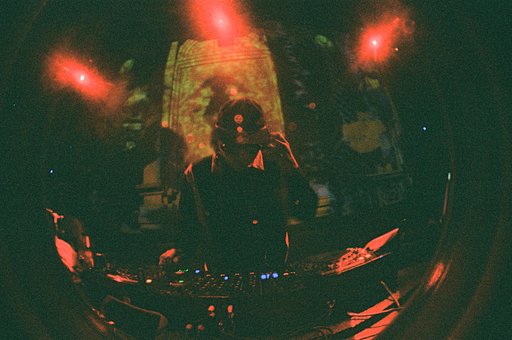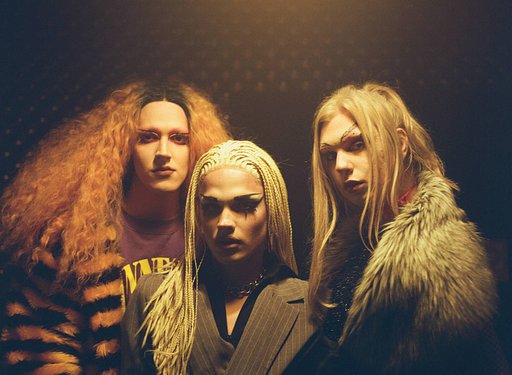Perception, Time, and Urban Space - An Interview with Jeremie Dru
1 13 Share TweetChallenge your understanding of space, time, and multiple exposures with Jeremie Dru. We had the opportunity to talk with him about his work, ideas, process and so much more. Read on to see what he has to say.
Hi, Jeremie! Welcome to the Lomography Magazine! Please introduce yourself to our readers.
Hi, I am Jeremie, a Parisian visual artist and I'm an architect by profession. I have been working on the perception of the urban spaces through visual medium (photography, video projection) since 2011.
Who is Jeremie Dru when not shooting? What do you do on your downtime?
I belong to an architecture collective named « G.A.N.G. » and we work on ways to interpret the city, our living environment. Otherwise, I read, I go to the movies and I wander a lot in Paris's streets, wondering how does the city exist through this perambulation.

Tell us about how you discovered photography. Was it always something that was innate and natural or learned?
I was always interested in what an image can allow us to tell and in how ideas can crystallize images not only with photographs but also in cinema, video, paintings, drawings. I was a student when I started with photography and I was using the camera to capture the geometry of architecture and relate atmospheres of urban spaces. And then by reading books about astrophysics, I started to use it as a tool to relate something about cities that are beyond our perception.
How would you define photography?
Photography allows us to work on the link between light, space and time. It s a way to analyze space-time thanks to the light. It's not limited to portrait, or landscapes, there are many ways to use this tool. I am thinking about photograms or chronophotographs, etc.
These became different tools to work on time. We can cut it, melt it, and describe it. Actually, I am working with multiple exposures which allow me to combine different spaces and moments. The photographs show us that time is not as linear as we perceive it. Thanks to photography or video, we can bend it and represent a different form of perception -- one that is out of our field of interpretation.
What’s your favorite subject? Where do you draw your inspiration from? What fuels your creativity?
I am deeply interested in infinity, and relativity. A lot of artists through different mediums have worked on this subject. I am thinking about the impossible constructions of M.C. Escher or novels of J.L. Borgès. A lot of concepts come out the notion of infinity, which can easily lead us to paradoxes. It brings us back to the idea that we (as individuals) have a limited vision of our environment and the world. And I find it fascinating to be able to get out of our perception of the world.
How do you come up with your concepts? How do you stay creative?
When I started this photographic work, I was losing myself in the city looking for places that remind me of another one I did cross paths with before. I wanted to show the way loose places can exist through the footsteps of the walker.
As time went on, I've started to work on the perspective. The perspective is the science that can turn a three-dimensional space on a two-dimensional surface by respecting what our eye can see in such a way that it is understandable. I found out that working on the vanishing point makes the multiple exposures understandable for our optic system, and that working on this point can upset the natural laws. The very architecture of the place tends to be metamorphosed. The capture by symmetric overprints tends to reveal paradoxes related to the geometry of the places we visited.
How would you describe your style in five words?
Exploration through urban space-time.
In your opinion, what are the characteristics of a good photograph?
I like images that show me something I couldn't see with my eyes.
What’s your favorite photograph? Why?
In my own work, I don't have a favorite picture. I like every moment I manage to go further in what this technique allows me to create. So my favorite picture is always the last one I have done.
What camera/film/accessory setup do you use in your professional and personal work?
My photographic work is only analog work. There is no numeric manipulation. All the work is made by shooting on the negative. I have a Mamiya RZ67, a medium format camera, and I shoot with Ilford film. Sometimes I work with a tripod, but I must admit I am still not comfortable with it, I prefer holding the camera each time I shoot.
Any photographers/artists that you follow religiously?
I follow a lot of artists, but I always refer to Jorge Luis Borgès or Italo Calvino. I have read a lot about surrealists, especially the artist of the New Vision (such as Moholy-Nagy, Man Ray or Moi Ver). They are the first who talked about the way photography as a tool that can complete our eye and lead us to truths we couldn't perceive with our senses.
Who’s your dream collaboration?
I would like to work with a scientist to pursue this research on the complexity of the cosmos and of life inscribed in the geometry of the city.
Any upcoming projects? Please talk about them.
I did an installation with Johan Bioley for the Nuit Blanche of Paris in October of 2016. It was an anamorphic video projection in the street of Paris. I am trying to make a solo exhibition in Paris and pursuing this project in Parisian monuments such as Le Panthéon. It's complicated because this is a very detailed architecture, and images become really loaded with information. Otherwise, I am looking for a way to visit some cities in the world, to see American buildings, or architectural remains of the Mediterranean Basin, and also Asian concrete architecture.
Any last words for our readers?
Thank you for taking the time to look at my photos, and to read the article, hoping that you found something interesting in this work.
You can see more of Jeremie's multiple exposure photographs on his website and Facebook page. We would like to express our gratitude to Jeremie for letting us share his work within the Lomography Community.
written by cheeo on 2017-04-23 #culture #people #mx #surreal #architecture #double-exposure #jeremie-dru

























One Comment